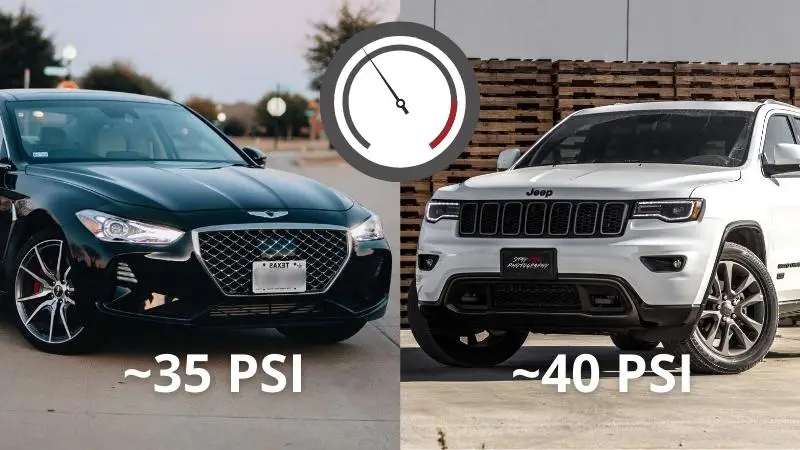Your tire does not support the vehicle’s weight, but the air pressure inside does. This explains why tire pressure is a concern amongst car manufacturers, owners, and mechanics. It determines how your car performs, its driving comfort, and stability.
If you follow the tire pressure specifications, cornering and braking become more manageable. In general, the handling of the vehicle will always be the best.
Driving with under-inflated or over-inflated tires will affect these characteristics in one way or another.
But why do different cars have different tire pressure recommendations? In order to achieve optimal handling, fuel efficiency and safety, different cars require different tire pressures based on vehicle application, size (mainly weight), and tire size.
Here is a breakdown of why different cars have different tire pressures and how these variables impact performance.
Why Tire Pressure Depends on The Car And Not The Tire
There are various metrics that automobile manufacturers use to determine tire pressures for different cars. First, they consider the load designed for the vehicle to carry and the tire sizes that should be installed. Globally, some organizations purposefully exist to establish and publish standards for tires, wheels, and other parts and their interchangeability.
Most of these organizations are not government-mandated or regulated. All these organizations are set up voluntarily, and no vehicle manufacturer has to stick by the set standards. However, to be on the safe side legally and practically, most automobile manufacturers abide by these standards when making tires.
These organizations work jointly by consulting each other to ensure similarity across the board. They set up standard dimensions for all tires to ensure the tire proportions and sizes are closely similar. By doing this, every manufacturer has to conform to these sizes are interchangeable, especially their physical dimensions.
How Manufacturers Determine Car Tire Pressures
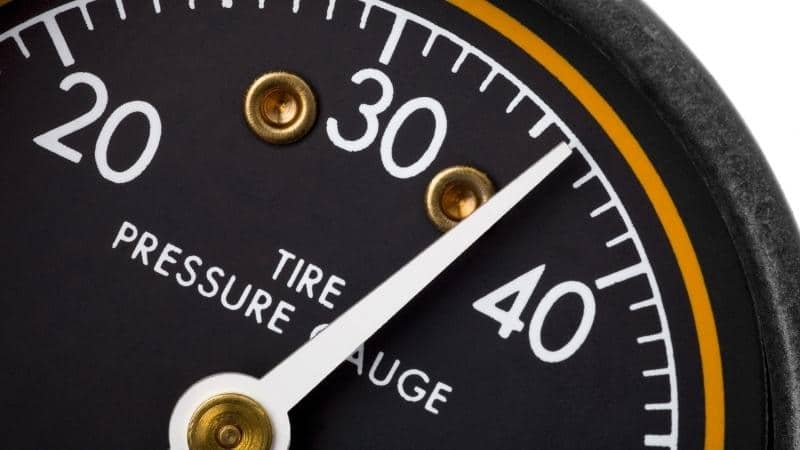
Every manufacturer must conform to the set “load curve” for each tire— the relationship between the inflation tire and the maximum load capacity the tire can hold. Similar to the size standards, different regulatory organizations have varying load curves, although insignificant.
Every load curve standard determines where the load curve stops increasing. Most tires have a load curve at 35 psi. Equivalently, some organizations’ standards peak at 36 psi. All the organizations involved agree that the standard load for a passenger car should be higher at 44 or 51 psi. However, higher inflation pressures do not impact increasing load capacity and, in some instances, determine circumstances for reducing the load for high-speed use.
Therefore, the automobile manufacturer knows how much a vehicle weighs and the additional weight caused by passengers, fuel, cargo, and other additions. This results in the addition of a 10% safety factor.
Passenger cars, light trucks, and SUVs require increased pressure to improve handling. Extra inflation pressure reduces rolling resistance which facilitates excellent fuel economy. This leads to manufacturers aiming for higher pressure inflation to improve reliability.
High-speed cars are built with tires designed for higher inflation, but this is subject to change to achieve a smooth ride. Some vehicles may choose lower tire pressures over high tire pressures to achieve a smooth ride. At the same time, some choose the latter for better performance and fuel economy.
Tire Pressure For Passenger Cars
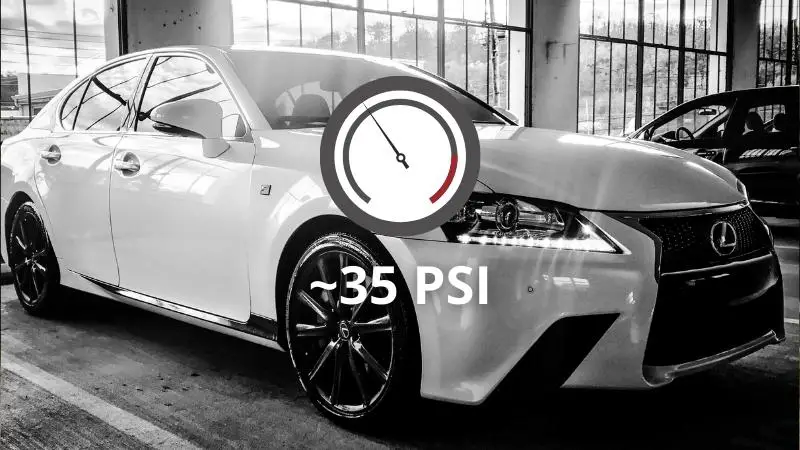
Passenger car tires often have a minimum of 35 psi, especially the ¾ and 1-ton vehicles. They can use more air pressure to curve through twisty roads, maintain high speeds and rotate consistently. When these tires are used at low pressures, they tend to wear more edges, especially on curvy terrains.
Minivans, too, can use pressures above 35 psi because they are slightly heavier and have smaller tires. This means they work extra hard in sharp bends, with poor handling when heavily loaded. Extra air pressure is suitable for handling the extra weight.
During long travels on winding roads, the sidewalls tend to be overworked and could lead to wearing.
Tire Pressure For Heavier Trucks
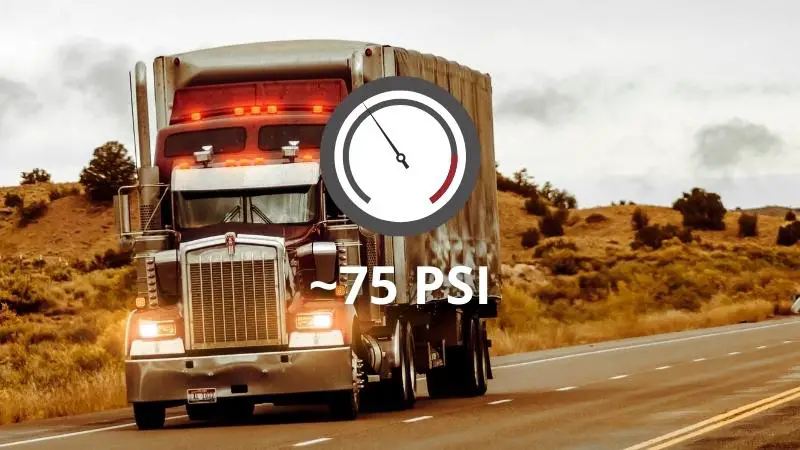
Heavier trucks require higher air pressure than lighter trucks, minivans, and passenger cars. The standard air pressure for these tires would be around 55 psi for the front and 80 psi for the rear tires. 75 psi for both front and rear tires is also acceptable.
These higher pressures assist these vehicles in handling heavy jobs and long-distance travel. When the tires are appropriately inflated, the handling and performance of the vehicle improve.
Why do Some Cars Take More Than 35 PSI?
Some automobile manufacturers may recommend up to 40 psi considering modern tire designs can hold about 44 psi or 51 psi. The air pressure in most cars will decrease when driving above 100 mph. The extra air pressure is meant for compensation. Tires with pressure specifications above 44 psi are suitable for driving at high speeds over 100 mph.
However, before adding air pressure past 44 psi, consider the vehicle’s weight because it will likely affect smaller vehicles. Extra-wide low profile tires could use pressures because they undergo wearing in the middle. Observe caution when going over 35 psi.
How to Check The Tire Pressure For Your Car
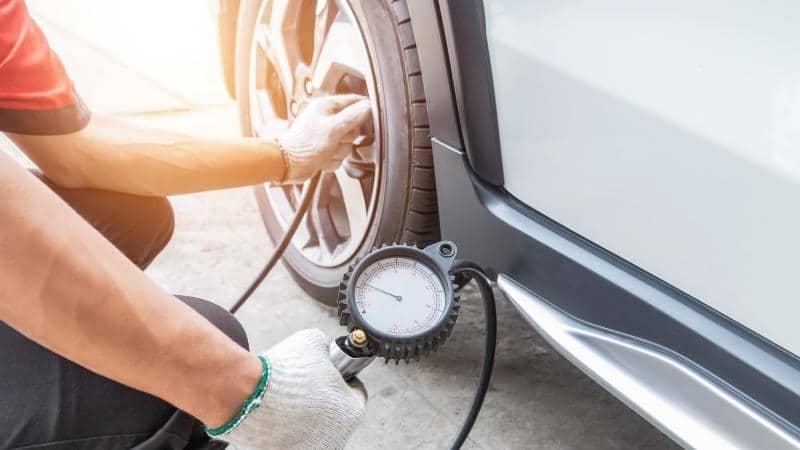
The correct tire pressure of your car is essential for attaining excellent gas mileage and maximizing your tires. The specific tire pressure for your car gives you the best gas mileage, handling, and longevity of the car. These figures are indicated on a sticker on the driver’s door. Always consider the air pressure amount when filling up your tires.
Even though newer cars have stickers on the door jamb, some manufacturers publish them on the owner’s manual. You are advised to check the tire pressures when it is cold for accuracy. During the day, there is increased tire pressure due to heat-generating from friction.
The number on the sticker is the maximum pressure the tire holds and not the amount of pressure you should inflate. This is not your vehicle’s recommended pressure. Overinflating the tire means a bumpy ride and poor vehicle handling.
Under-inflating the tires causes premature wear caused by too much fraction. Following the manufacturer’s specifications improves your vehicle’s performance.
Conclusion
The bottom line is that carmakers will determine the proper tire pressure for their cars. Depending on how you intend to use the car, you can check for specific psi requirements that meet your intended purpose.
This will be based on the tire size, the vehicle’s weight, and whether it is daily driven or off-road purposes.
Hi, my name is Niklas, the head content creator & CEO of Whirling Wheelz. I am very interested in vehicles of all kinds, mainly cars. I have a car mechanics degree from high school and a big hobby of mine is to follow the WRC (World Rally Championship) both online and through travel.

